World IA Day 2018, New Delhi
- Author
- Souvik Das Gupta
- Published
World IA Day (WIAD) is a one-day annual celebration that inspires the growth of information architecture as a community of practice across the globe. It started off back in 2012, however, for the first six years, New Delhi was missing from the map of global locations celebrating WIAD.
Information Architecture has always been a core part of our work and features in pretty much every web project we tackle. So last year we decided to bring this initiative to our city. I reached out to the WIAD Global Team and signed up to be the location organiser for New Delhi. Abhishek Rai, a fellow co-worker at Base Station, volunteered to help us put the event together.
This year’s global theme was “IA for Good”. We decided to focus on conversations that would involve representatives from non-profits and journalism. We believe through awareness about information architecture such professionals can catalyse a positive change in our society.
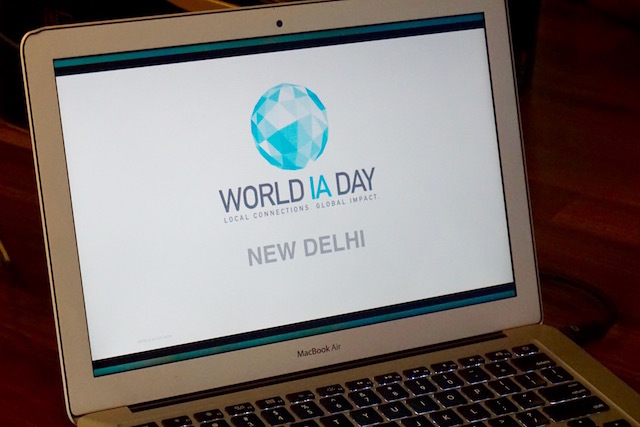
On February 24th, Abhishek kicked off the first edition of World IA Day in New Delhi. He oriented our attendees towards the purpose and theme of World IA Day, followed by the agenda of the day — 5 talks curated to help attendees understand the significance, process and impact of IA through examples relevant to the development sector.
Here’s a summary of each of the talks (with links to the slides and sketchnotes by @rasagy).
Information Architecture for Everyone
I delivered the first talk of the day introducing information architecture to the audience. The objective of the talk was to make the community aware of IA without bombarding them with technical jargons. Instead, I relied on everyday examples of IAs such as in books, house-numbering, pharmacy stores, exhibition spaces, or simply a buffet spread. My talk concluded with highlighting how IA lies at the intersection of information, user and context — which nicely set the stage for the remaining talks of the day.

Slides: Information Architecture for Everyone
User Research 101
Next up was Rasagy Sharma who is a designer at Mapbox. Rasagy’s talk focussed on the subject of user research and attempted to describe the whys and hows on the topic. In addition to covering some of the simple, easy-to-adopt techniques, Rasagy answered a bunch of queries pertaining to the more involving techniques. This was Rasagy’s first attempt at using hand sketched slides for a talk and everyone loved those!
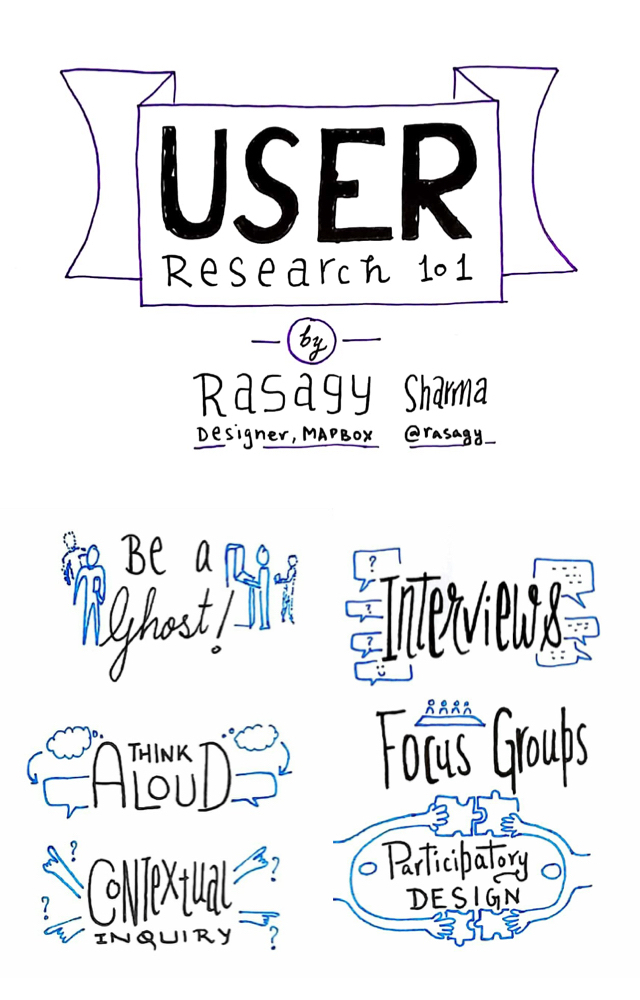
Slides: User Research 101
IA and Research Synthesis
The pre-lunch talk was presented by Namita Mohandas, an independent information designer. Many a time despite investing a lot in research we’re unable to make good use of the research output, especially in understanding the problem space or connecting them with ideas or solutions. Through an example of her past work with Akanksha, Namita addressed this issue and emphasised the importance of research synthesis.
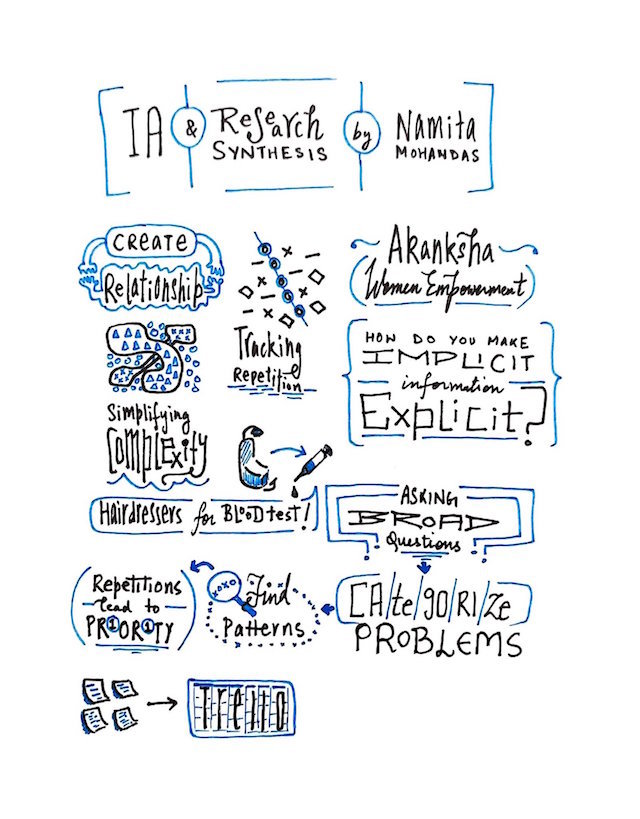
Slides: IA & Research Synthesis
Considering the Context of the Last User
Right after lunch Roshan Nair, the Country Manager at viamo.io, introduced a new perspective to our ongoing conversations. Roshan presented 3 different examples from their work in IVRs where IA gaps emerged when the system was rolled out to last users. Roshan defined last users as the group of users present at the absolute periphery of service delivery whose needs (and context) are often overlooked by designers and information architects. IVR examples also helped our audience break away from associating IA to visual outputs.
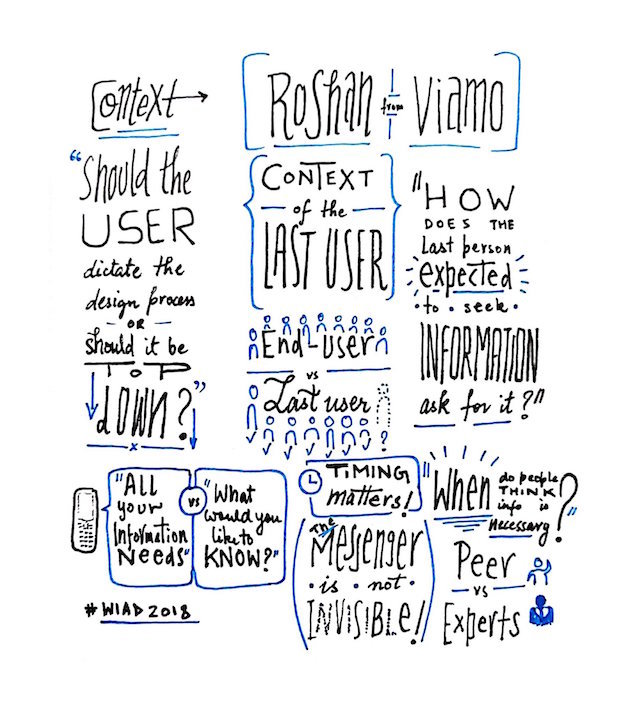
Slides: Considering the Context of the Last User
Communicating Social Impact Better
The final talk of the day was by Sheel Damani, an Independent design and communications consultant. Sheel started of with establishing the purpose of organised information which is to make itself findable, easy to share and align people across a value chain or system. She went on to critically review the annual reports of a number of non-profits and presented her analysis of the information and its organisation. Sheel also deserves the coolest analogy of the day award for pulling out an analogy from the 90’s Bollywood cult comedy Andaz Apna Apna.

Slides: Communicating Social Impact Better
It’s immensely fulfilling to see happy attendees at the end of an event. Here are a few moments captured at the event.
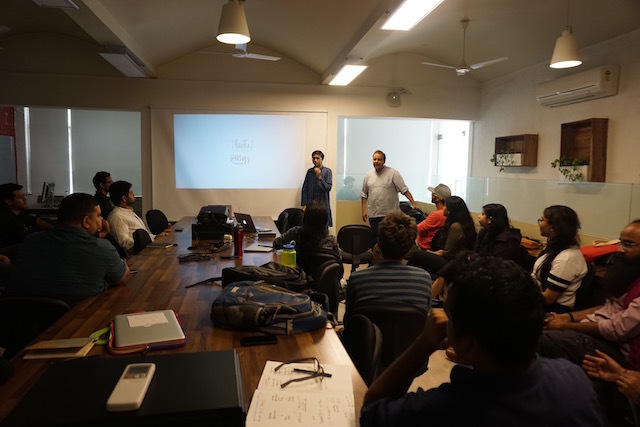

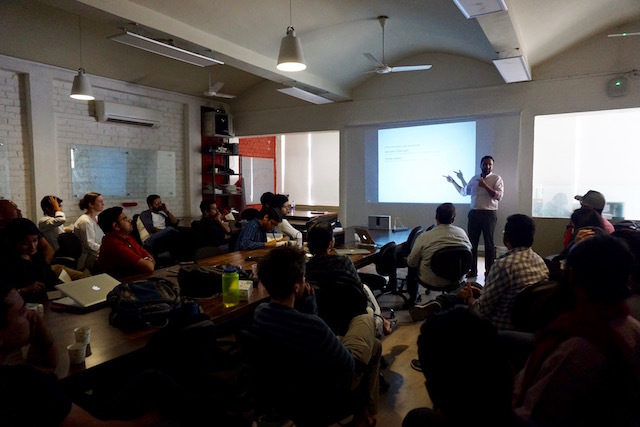

There’s an entire album if you’d like to see more.
We look forward to bigger and better editions in the coming years.